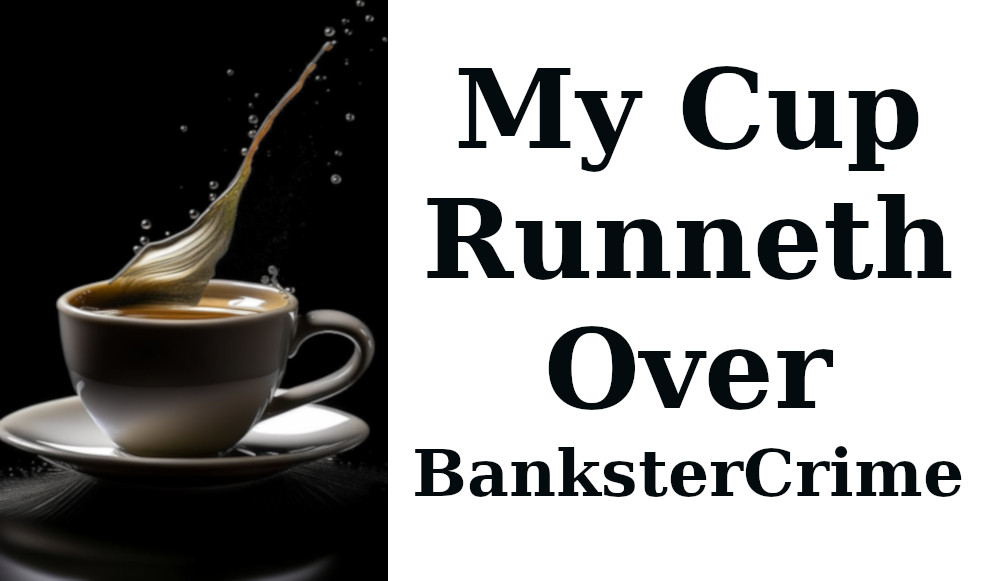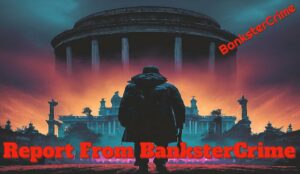
BanksterCrime:
By Pam Martens and Russ Martens,Stanford Finance and Economics Professor Anat Admati has been valiantly attempting to save the American financial system from the corrupting influence and disinformation campaigns of men like JPMorgan Chase’s Jamie Dimon for more than a decade. Her voice is gaining traction and that’s making Dimon very nervous.Dimon has admitted in his recent letter to shareholders that his federal banking regulators want the bank to raise 25 percent more capital. Making banks hold more equity capital (as opposed to debt) is an issue that Admati has made a central focus of her arguments for years.Dimon’s bank would have a lot more equity capital if Dimon had retained the bank’s earnings each year instead of tapping those earnings to boost the bank’s stock price by using $117 billion of the bank’s earnings for share buybacks over the past decade. (Retained earnings add to a bank’s equity capital.) Dimon became a billionaire as a result of the bank’s inflated share price, because his Board gave him the bulk of his annual compensation in shares of stock. (In February of this year, Dimon cashed out $150 million of that stock.)
In 2011, one year before Dimon called a growing financial crisis at JPMorgan Chase “a tempest in a teapot,” Admati penned an open letter to the bank’s Board of Directors and published it at Huffington Post. In the letter, she wrote:
“Mr. Dimon claims that higher capital requirements would increase JPM’s cost, but his reasoning is flawed.“It is critical first to distinguish capital and liquidity requirements. Capital requirements are not about what banks ‘hold.’ They do not mandate that banks passively ‘set aside,’ or ‘hold in reserve’ funds, not putting them to productive uses. Banks’ investments are not constrained by capital requirements. Capital requirements refer only to how banks fund themselves. It is investors, not the banks, who hold the debt and equity (so-called ‘capital’) claims that banks issue. Liquidity requirements, by contrast, do constrain the types of assets banks hold, and they can be costly. Capital and liquidity requirements refer to different sides of the balance sheet.”
Less than two years after Admati had penned her warning about how Dimon was running JPMorgan Chase, the U.S. Senate’s Permanent Subcommittee on Investigations had concluded a nine-month investigation into how JPMorgan Chase was using deposits from its federally-insured bank to make high-risk gambles in derivatives in London. The scandal became known as the “London Whale.” The Subcommittee released a scathing 300-page report on the matter, which contained this opening paragraph:
“JPMorgan Chase & Company is the largest financial holding company in the United States, with $2.4 trillion in assets. It is also the largest derivatives dealer in the world and the largest single participant in world credit derivatives markets. Its principal bank subsidiary, JPMorgan Chase Bank, is the largest U.S. bank. JPMorgan Chase has consistently portrayed itself as an expert in risk management with a ‘fortress balance sheet’ that ensures taxpayers have nothing to fear from its banking activities, including its extensive dealing in derivatives. But in early 2012, the bank’s Chief Investment Office (CIO), which is charged with managing $350 billion in excess deposits, placed a massive bet on a complex set of synthetic credit derivatives that, in 2012, lost at least $6.2 billion.”
Let that sink in for a moment. Less than four years after Wall Street banks had crashed the U.S. economy in the worst financial crisis since the Great Depression of the 1930s, and just two years after the Obama administration had passed and signed into law the Dodd-Frank financial “reform” legislation, JPMorgan Chase was using deposits from its federally-insured bank to gamble in risky derivatives and lose $6.2 billion of its depositors’ money.In a rational banking system, Dimon would have been immediately sacked and JPMorgan Chase’s ability to use deposits at its federally-insured bank to make high-risk bets would have been curtailed and fiercely policed by regulators. Instead, the federal regulator of national banks, the Office of the Comptroller of the Currency, released a report on March 27 of this year indicating that at year end 2023, JPMorgan Chase’s federally-insured bank held $49.68 trillion (yes, trillion) in notional (face amount) derivatives. That included $3.89 trillion in stock (equity) derivatives; $880 billion in commodity derivatives; $1.05 trillion in credit derivatives, of which $238.6 billion were junk-rated; $246.8 billion in precious metals derivatives and so forth.Dimon’s Board of Directors, who the last time we looked were deeply conflicted themselves, not only kept Dimon in place as Chairman and CEO through the London Whale scandal, but also through the bank admitting to five outrageous felony counts and a rap sheet that rivals an organized crime family.Now, at the worst time possible for Dimon, as he attempts to bully regulators into scrapping their demands for higher capital at JPMorgan Chase, out comes Admati with an updated and expanded version of the highly readable, pristinely documented, seminal book on bank capital and the bankers’ disinformation campaign around it: The Bankers’ New Clothes: What’s Wrong with Banking and What to Do about It. The book is co-authored with German economist Martin Hellwig. In it, Admati and Hellwig write this:
“The term ‘fortress balance sheet’ that Mr. Dimon loves to use conveys a sense of safety and security, the opposite of vulnerability and fragility. But if one examines the actual risks lurking around the size and type of the bank’s investments and debts, the strength of the fortress can be called into question. A closer look suggests that JPMorgan Chase is highly vulnerable and is imposing significant risk on the global financial system.“Some of the risks that make JPMorgan Chase dangerous cannot actually be seen by looking at its balance sheet because the positions that give rise to them are not included there. These are risks from business units that JPMorgan Chase might own in part or that it sponsors, and to which it has provided guarantees to serve as a backstop if they should have funding problems. These units might be full-flown subsidiaries, or they might be mere ‘letterhead firms,’ vehicles without any drivers, that are established for legal or tax reasons only. The bank’s commitments to these units amount to almost a trillion dollars, but these potential liabilities of the bank are left off the bank’s balance sheet. Yet they are quite relevant to the financial health of JPMorgan Chase.”
The authors note that these same kind of off-balance sheet exposures bankrupted Enron in 2001 and required bailouts of mega banks in 2007 and 2008 from their off-balance sheet exposures to subprime mortgage debt. (See our 2008 article on the Rise and Fall of Citigroup.)Senator Elizabeth Warren said last month in a Senate Banking Committee hearing that Fed Chair Jerome Powell has become “weak-kneed” and is now “driving efforts inside the Fed to weaken the capital rule.”That leaves the Fed Vice Chair for Supervision, Michael Barr; FDIC Chair Martin Gruenberg; and Acting Comptroller of the Office of the Comptroller of the Currency, Michael Hsu, on the frontlines of the regulators’ battle to stand firm on higher capital for the mega banks on Wall Street. The future financial health of the U.S. economy and the U.S. financial system depends on these regulators not also becoming weak-kneed.Not only do these regulators need to stick to their proposed higher capital rules, but they need to immediately push for the restoration of the Glass-Steagall Act to separate federally-insured banks from the trading casinos on Wall Street.

Give the gift of great skin care. Our Soap and Shave Bars are gentle and produce a smooth creamy lather that is nourishing to your skin. They are handmade in small batches. We use only high-quality natural ingredients that you can pronounce. No chemicals, no sodium laurel sulfate, no phthalates, no parabens, no detergents. The set can include Soap Bar, Shave Bar, Shave Brush, and/or Shampoo Bar. These come in a white box and are perfect for your gift giving needs.
Our soaps are made with skin loving ingredients including olive oil, coconut oil, lard, sweet almond oil, shea butter, and castor oil. We do not use palm oil. Scented only lightly with fragrance oils.
The Shave bars give a very close and smooth shave with no razor burn. They leave your skin feeling amazing. A lather can be built up in your hands and then applied to your face, but it is best to use a shaving brush. These bars will only produce a thick foam when used with a shaving brush.
Our Shampoo Bars have a thick lather. A lather can be built up in your hands and then applied to your hair, but it is best to rub the bar gently in your hair. Rinse and repeat.
You choose a scent:
A Thousand Dreams is a whimsical blue scented in a warm mix of fruity and floral notes with peach, peony, lily, musk, sandalwood, and amber.
Bay Rum Spice is a nice masculine scent similar to Old Spice. The scent notes are clove, pine needles, cedarwood, orange, vanilla, and musk.
Birch Woods is a great outdoors-type scent. The notes are bergamot, patchouli, vetiver, and tonka bean.
Cool Clear Water is a refreshing scent. The notes are crisp water, oakmoss, pine, cedar, and musk.
Lavender Champagne has a wonderful scent of Lavender and Champagne and has a light purple color. The scent notes are lavender, sparkling Champagne, grapefruit, orange, thyme, oak, and amber.
Midnight Waters is a moody-mystical scent that opens with fruity notes of red berries, juicy tangerine, and bergamot. Then unfolds into bubbly Champagne, violet flowers, cashmere, amber, and musk.
Raspberry Vanilla is an all-time favorite fragrance for soap. It is a beautiful magenta color. The scent notes are raspberry, strawberry, lemon, coconut, peach, honeysuckle, plum, and vanilla.
Warm Sandalwood is a warm, rich, and woodsy scent. The colors are warm and rich with brown, gold, and white.
A Soap bar will weigh approximately 4 ounces and be approximately 2.25 inches wide by 3.5 inches tall and 1 inch thick. A Shave bar will weigh approximately 3 ounces and be approximately 2.5 inches across and 1.25 inches thick. A Shampoo Bar will weigh approximately 3.5 ounces and be approximately 2.5 inches across and 1.25 inches thick. Please keep in mind that our products are handmade and hand cut. Each bar is unique and might vary slightly in shape, size, design, and color from those pictured.
Please keep your Soap Bars, Shave Bars, and Shampoo Bars well-drained and allow to dry between uses. This will ensure longer lasting bars.
Allergen: Our products contain oil from tree nuts. Please test on a small area of skin prior to use and stop using if irritation occurs. Do not use if you are pregnant. Do not use on infants under the age of 24 months. Do not get in your eyes as it will sting slightly. GoShopping

![]()






